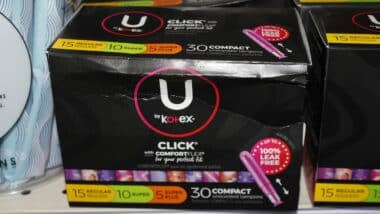 Toxic Epidermal Necrolysis (TEN), also known as Toxic Epidermal Necrolysis Syndrome, is a severe allergic reaction caused by the ingestion of a drug.
Toxic Epidermal Necrolysis (TEN), also known as Toxic Epidermal Necrolysis Syndrome, is a severe allergic reaction caused by the ingestion of a drug.
TEN is a more severe form of the condition known as Stevens Johnson Syndrome, or SJS. Both are very severe, with TEN being even more so, and both are potentially life-threatening.
A number of drugs have been associated with such a reaction, both prescription and over-the-counter. Common drug families known to trigger TEN and SJS include: ibuprofen, acetaminophen, antibiotics, anticonvulsants, sedatives and painkillers.
Lamictal and TEN
Lamictal (lamotrigine) is an anticonvulsant drug used in treating seizures that is also commonly used as a mood stabilizer. It was initially approved in 1994 for seizure treatment, and in 2003 is was approved to treat bipolar disorder. Off-label, Lamictal is also used to treat other psychiatric conditions such as major depressive disorder, post-traumatic stress disorder and borderline personality disorder.
Lamictal has a track record of having less side effects as compared to other mood-stabilizing drugs and seizure medications. Mild side effects from the drug include: dizziness, nausea, headache, rash, sleepiness and double vision. Some of these effects may be transient and may resolve once the body adjusts to the medication.
While a mild rash may be a common Lamictal symptom, if it turns out that the rash is Toxic Epidermal Necrolysis, the consequences could be deadly.
Symptoms of Toxic Epidermal Necrolysis Syndrome
Toxic Epidermal Necrolysis and Stevens Johnson Syndrome symptoms start out as presenting with flu-like symptoms. Fever, nausea, malaise and fatigue are common and are dismissed as a mild side effect or as a common cold or flu.
When the rash initially starts, toxic epidermal necrolysis pictures may show a rash looking like a sunburn or poison ivy. However, the rash will begin to progress, with red or purple blisters forming on the skin and mucous membranes.
The rash causes the skin cells to die, and the skin will begin to slough off in sheets. Toxic Epidermal Necrolysis pictures of a patient with an advanced progression of the disease will often show a person looking much like a severe burn victim.
The difference between Stevens Johnson Syndrome and Toxic Epidermal Necrolysis is the amount of skin affected by the condition. In SJS, up to 30% of the skin is affected. In TEN, 30 or more percent of the body is affected and the body may even appear to be nearly entirely covered.
Toxic Epidermal Necrolysis Treatment
There is no cure for TEN. Toxic Epidermal Necrolysis treatment focuses on stabilizing the patient as the medical team waits for the reaction to wear off. In cases of the less severe SJS, this may be days to weeks to months. With TEN, it is more likely that recovery will last longer.
Toxic Epidermal Necrolysis is a medical emergency and patients must be hospitalized. Many are treated in the intensive care unit or the burn unit, if available. The treatment focuses on wound care, pain management, IV nutrition and hydration and other methods to keep the patient stable.
While some patients have little lasting effects, many may experience continued issues as a result of the condition. Organ damage and blindness are two of the most common lasting effects from the condition.
The mortality rate for SJS is around 5-10%, and for patients with TEN, the outlook is poorer, with a mortality rate of 25-35%.
Filing a Lamictal Toxic Epidermal Necrolysis Lawsuit
If you or a loved one have developed Stevens Johnson Syndrome or Toxic Epidermal Necrolysis as a result of using Lamictal, you may be able to file a lawsuit against the manufacturer for failing to warn about the potential side effects.
You may be eligible to receive financial compensation to recover your losses due to medical bills, pain and suffering, loss of wages and more. An experienced TEN attorney can review your case for free and guide you on your legal options.
Do YOU have a legal claim? Fill out the form on this page now for a free, immediate, and confidential case evaluation. The Stevens Johnson Syndrome attorneys who work with Top Class Actions will contact you if you qualify to let you know if an individual lawsuit or class action lawsuit is best for you. [In general, SJS lawsuits are filed individually by each plaintiff and are not class actions.] Hurry — statutes of limitations may apply.
ATTORNEY ADVERTISING
Top Class Actions is a Proud Member of the American Bar Association
LEGAL INFORMATION IS NOT LEGAL ADVICE
Top Class Actions Legal Statement
©2008 – 2025 Top Class Actions® LLC
Various Trademarks held by their respective owners
This website is not intended for viewing or usage by European Union citizens.
Get Help – It’s Free
Help for Victims of Stevens Johnson Syndrome
If you or a loved one were diagnosed with Stevens Johnson Syndrome (SJS) or toxic epidermal necrolysis (TEN) after taking a prescribed or over-the-counter medication, you may be eligible to take legal action against the drug’s manufacturer. Filing an SJS lawsuit or class action lawsuit may help you obtain compensation for medical bills, pain and suffering, and other damages. Obtain a free and confidential review of your case by filling out the form below.
An attorney will contact you if you qualify to discuss the details of your potential case at no charge to you.
Oops! We could not locate your form.












